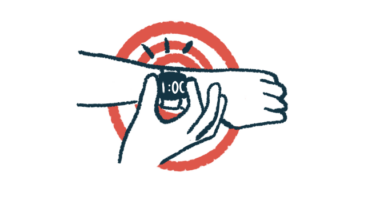Anonymous Survey Shows Cannabis Use by 11.3% of Patients in Norway

In an anonymous online survey, 11.3% of Norwegian adults with Parkinson’s disease revealed current or previous use of cannabis or a related product, with a high percentage reporting symptom relief.
According to researchers, patients who use the medicinal drug from the marijuana plant — and those interested in trying it — were hesitant to seek advice from doctors or other healthcare providers regarding cannabis use in Parkinson’s.
“While many expect to be advised against cannabis use by health care professionals, several [people with Parkinson’s] fear negative consequences and have low expectations toward health care professionals on this topic,” the team wrote.
“These findings are important for clinical practice, as these barriers may hinder the identification of patients using these products,” they noted.
The survey, “Cannabis use in Parkinson’s disease — A nationwide online survey study,” was published in the journal Acta Neurologica Scandinavica.
An interest in the clinical use of cannabis to treat Parkinson’s has increased in recent years among researchers, clinicians, and patients.
Although there is no clear evidence supporting its efficacy in Parkinson’s, some researchers and patients suggest that cannabis, or cannabinoid compounds within the plant, may help with motor- and non-motor symptoms of the disease.
Because cannabis and its related products are unregulated in most of Europe, there is a need to investigate the clinical utility of cannabinoids for Parkinson’s patients.
Now, researchers based at the Norwegian Centre for Movement Disorders, at the University of Bergen, conducted an anonymous online survey, called Can-PD, to examine the use of cannabis among Norwegian adults with Parkinson’s and their caregivers — and to describe their attitudes and experiences with the herbal medication.
Participants were recruited via email and Facebook posts, as well as through podcasts and webinars available to members of the Norwegian Parkinson’s Disease Association (N-PA). The Can-PD survey was a 24-item questionnaire of cannabis use patterns.
A total of 520 people with a self-reported diagnosis of Parkinson’s disease responded to the survey, as did 106 caregivers. The patients ranged in age from 60 to 71, and the caregivers’ ages ranged from 49-70. Disease duration ranged from three to nine years. Among the respondents, 61.3% of patients, and 52.6% of caregivers, were male.
The survey results revealed that 4% of Parkinson’s patients said they currently use a cannabis product, while 7.3% said they had used such products in the past. The remaining 88.7% reported no history of cannabis use.
Both current and previous users reported a significantly longer median disease duration compared with patients who had never used cannabis, “suggesting that non-prescribed cannabis use is not limited to the initial phase of [Parkinson’s disease], but also seen in patients with longer disease duration, where the clinical and functional problems usually are more complex,” the researchers wrote.
The most frequently used product among current and previous users was cannabidiol, or CBD oil — current users at 66.7% vs. previous users at 78.9%. Hashish or street cannabis was the next most frequently used product (current users 23.8% vs. previous users 18.4%), then the extract Sativex, marketed as an anti-spasticity medication. For Sativex, current users were 14.3% and previous users 2.6%.
Among the current users, 66.7% used a cannabis product once per day, and with previous users, 71.1% had daily use. Both groups’ average cost per week ranged from no cost to 3000 Norwegian Krone (about $340).
The most frequently reported reason for using these products was symptom management (current users 95.2% vs. previous users 76.3%) and relaxation (current users 33.3% vs. previous users 13.2%). Stopping disease progression or seeking neuroprotective effects was cited by 9.5% of current users and 18.4% of previous users.
Adverse effects were reported by about 5% of all users, and two participants reported interaction effects between prescribed therapies and cannabis.
Among people who stopped using these products, the primary reason for discontinuation — reported by 44.7% — was that the medication had no impact on symptoms. More than one-quarter (26.3%) were worried about breaking the law, and nearly that percent (23.7%) cited the costs. Some patients (13.2%) had concerns about side effects, while 26.3% reported other reasons for stopping.
The most commonly reported benefit among current users was improvements in motor symptoms (95.2%), then improvements in sleep (76.2%), and pain (52.4%). Previous users followed the same pattern of benefits. Stiffness, tremor, and sleep were the top three symptoms reported by patients in both groups who saw improvements with cannabis use.
“These findings are in line with results from other survey-based studies, but contrasts results of controlled studies, which challenge the notion that cannabis or cannabis-related products are viable for the treatment of motor symptoms in [Parkinson’s disease],” the scientist wrote. “To clarify this discrepancy, future studies should include both objective and subjective measures of motor symptoms.”
Among the 59 Parkinson’s patients who had used cannabis products, 50.8% sought a medical professional’s advice about its use. The reasons cited for not seeking advice were low expectations the provider had an interest or knowledge about cannabis as a Parkinson’s treatment, fear of negative consequences, and not wanting to disclose non-prescribed treatments.
Within the group of patients with no cannabis history, 59.8% expressed an interest in such treatment to improve symptoms, slow disease progression, and relaxation. Among these, 19.9% sought advice from a healthcare professional.
For those who did not seek advice, 42.5% had the expectation the health care professional would recommend against cannabis use.
While the researchers noted differing cultural norms regarding cannabis use across countries and continents, they said the use of such products is rare among adults in Norway, further highlighting the 11% reported use in this survey.
“This frequency estimate is higher than that observed in the United States (4%) and Germany (8%), significantly lower than data from the Czech Republic (25%), but in line with frequency estimates from the United Kingdom (13%),” they wrote.
These findings support the need for more research.
“To further help clinicians and user organizations provide evidence-based health information to [people with Parkinson’s] using or considering using cannabis or cannabis-related products, longitudinal [over time] data are needed,” the authors concluded. “Clinical studies using standardized cannabis dosages are also warranted given the high frequency of benefits of use seen in current users.”







